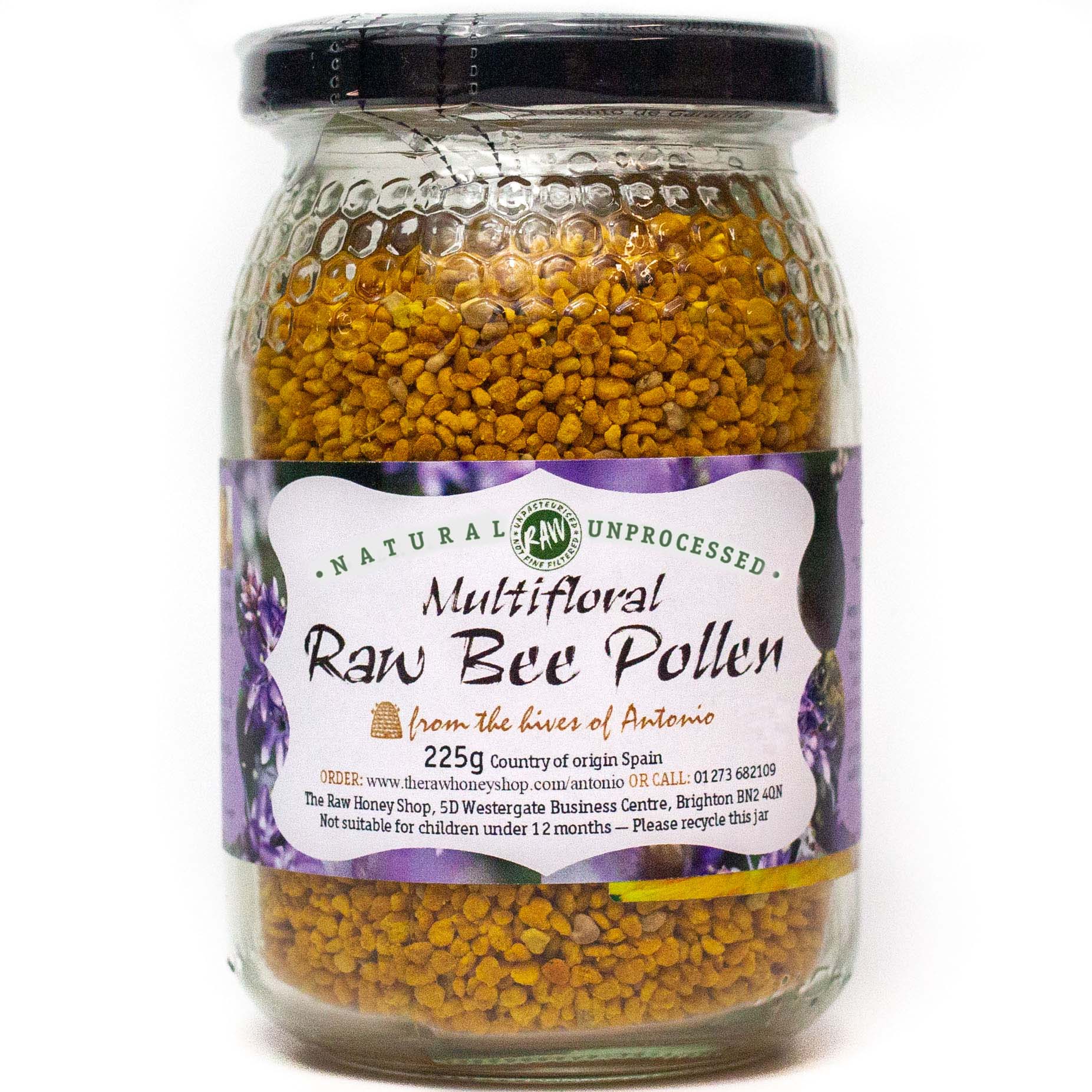Antonio's Dried Raw Organic Multifloral Bee Pollen - 225g
- Regular price
- PLN 92,00
- Sale price
- PLN 92,00
- Regular price
-
PLN
Antonio's dried organic multifloral pollen has a deep and rich taste, earthy and creamy with sweetness and hint of bitterness, very unusual the first time you have it, but you become more accustomed with it in time, tastiest mixed in warm water.
Colour: This particular pollen is orange and yellow and has the occasional green and red grain.
What Does Multifloral Bee Pollen Taste Like?: This is an earthy and rich pollen, it has a sweet yet potent taste which is a little hard to describe. It is collected from the bees who feed on the mixed flora in the northern wilderness of Madrid. It is mostly small orange grains with occasional green and red one, it has a fairly strong taste, more potent than honey, but can be taken with warm water or a meal. This has been naturally dried to help retain its beneficial properties.
Pollen Facts: Long ago the Greeks and Romans called natural bee pollen "the life-giving dust" or the secret "ambrosia" eaten to acquire eternal youth. Pollen was entombed with pharaohs, it was used by the American Indians, and for centuries by tribes in China. Bees have pollen sacks which they collect the pollen in to take back to the hive, the brood need a lot of protein to aid their growth, for short periods of time the beekeepers harvest the pollen by placing small brushes at the entrance of the hive, this brushes off the pollen grains and are temporarily collected, the bees are then left to collect without interference again.
Where does the pollen come from?: This variety of multifloral pollen comes from the northern mountains of Madrid, a beautiful wild and unspoiled landscape.
What about the plant the pollen comes from?: The pollen comes from bees feedingon wild flowers and flora of northern Madrid. They are vast amongst the mountainous regions, there are Spring narcissi, Crocuses, Lavenders, Brimeura, Gagea and Romulea just to name a few!
Common Uses: Pollen has been used throughout the ages as a source of food and nourishment as it provides a good source of protein as well as b vitamins directly from the plants and assisted by the bees natural enzymes.
Who produces the pollen?: This multifloral pollen honey variety comes from Antonio, a 4th generation beekeeper who takes pride in producing honey in a traditional way without adding or taking away anything.
Important - Allergies:
If you are affected by hay-fever, then bee pollen can cause an allergic reaction. If you are in any doubt it is advisable to take just a few grains initially and then wait to see if you have any problems. If not, you can then gradually increase the dosage until you are sure it is not affecting you


















